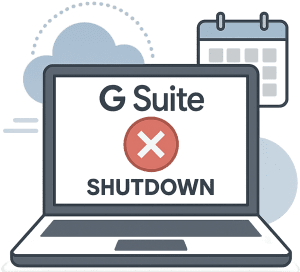What Paramus Businesses Need to Understand About Cloud Services
Paramus cloud services: “We’re in the cloud” has become a common phrase in Paramus boardrooms—but too often, the conversation stops there. For many small and mid-sized businesses in Bergen County, cloud adoption has been reactive: driven by software vendors, remote work shifts, or industry trends. What’s missing is strategy.

At a glance, the benefits of the cloud are obvious—scalability, accessibility, reduced hardware overhead. But beneath that surface is a complex web of architecture choices, cost structures, and security considerations. And in Paramus, where professional services and retail operations rely on real-time access to systems, those decisions carry operational and financial consequences.
The Cloud Is Not One Thing
One of the biggest misconceptions among business owners is that “the cloud” is a single solution. In reality, it’s a spectrum: public, private, and hybrid environments; SaaS applications; IaaS deployments; containerized workloads; serverless functions. Each comes with trade-offs in control, performance, and cost.
We’ve seen Paramus companies overcommit to software suites with recurring costs that balloon over time—or, conversely, underinvest in cloud security and suffer avoidable breaches. Neither outcome is inevitable. They’re symptoms of not having a plan.
Local Risks, Global Architecture
Many Paramus businesses assume that cloud infrastructure “just works.” But most outages we investigate come down to one of three issues:
- Misconfigured access controls, exposing sensitive data to unauthorized users
- Poorly managed backups, leading to irreversible data loss
- Vendor lock-in or complex billing that makes scaling painful and expensive
Cloud missteps don’t always make headlines, but they cost real money. Downtime during retail hours. Missed deadlines for law firms. HIPAA or SOX violations for regulated industries. The reality is that cloud without oversight is simply risk transferred to someone else—usually without visibility.
A Different Approach: Managed Cloud+
Cost+ offers Cloud+ to help Paramus companies take control of their cloud investments. We don’t resell someone else’s platform and walk away—we manage your environment, optimize costs, and build for reliability.
Key aspects include:
- Direct ownership of cloud accounts (you pay AWS, Azure, etc.—we manage it)
- Custom architecture for performance, security, and future growth
- Flat-rate pricing tied to your usage, not surprise invoices
- Proactive monitoring, patching, and access governance
Whether you need to migrate an on-prem server, build a HIPAA-compliant cloud system, or simplify your software stack, our team brings clarity and technical rigor to a space filled with buzzwords.
Integrated with Your Operations
Cloud is not an island. It touches your endpoints, your communications, and your compliance framework. That’s why our Paramus clients often pair Cloud+ with:
- Support+ to manage local devices and users
- Recovery+ to ensure business continuity and retention
- Compliance+ to align with industry-specific requirements
This full-stack approach prevents finger-pointing between vendors and ensures your cloud strategy supports—not complicates—your business model.
Let’s Audit Your Cloud
If you don’t know what you’re spending, what’s secured, or what’s even running in your cloud environment, you’re not alone. Most companies have drifted into the cloud without a clear map. We offer a no-obligation review of your current cloud setup—including costs, risks, and optimization opportunities.
Explore Paramus IT services or book a Cloud+ audit today.
Or call us directly at 800.840.9690.



